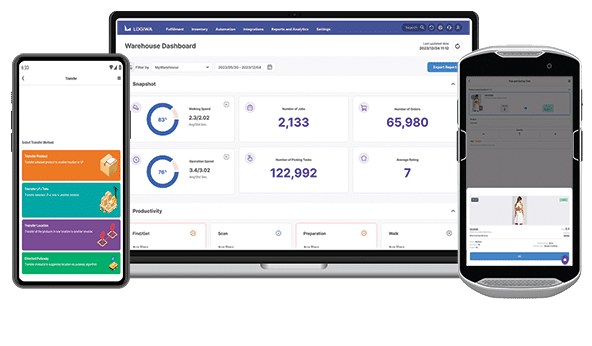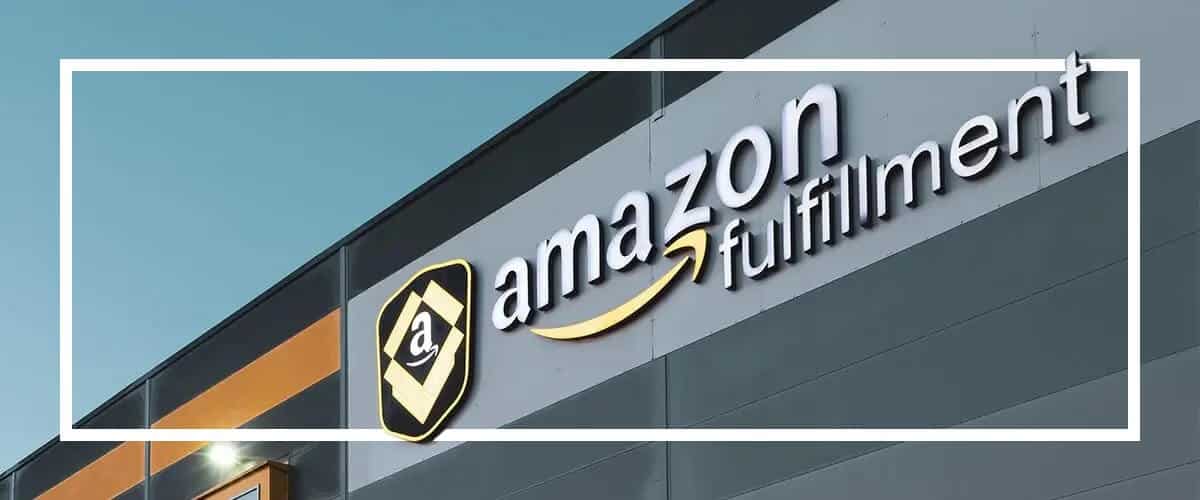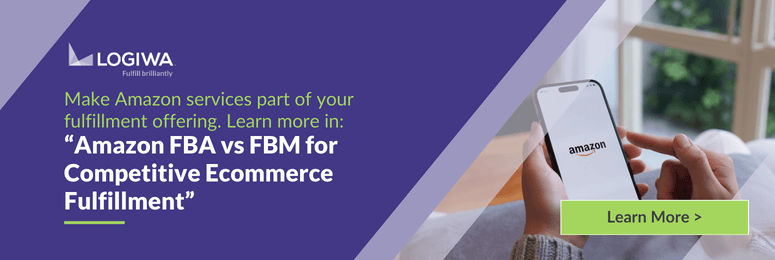Becoming an Amazon FBA seller offers a convenient and affordable way to effectively meet consumer demand and achieve the competitive fulfillment standards expected of today’s DTC and B2C operations. When used successfully, it can help you grow your online business and execute same-day deliveries without having to own your own warehouses, manage complex fulfillment logistics or tackle customer support.
That said, FBA membership has elements that you, as a seller, must be aware of in order to navigate and benefit from this robust service. Here’s everything you need to know.
Key Takeaways
- Fulfillment by Amazon (FBA) allows sellers to outsource fulfillment logistics to Amazon, including the storage, packing and shipping of orders, as well as returns management and customer service.
- FBA offers advantages like customizable programs, access to Amazon Prime shipping options, discounted shipping rates and dependable customer service.
- FBA provides pay-as-you-go options, allowing you to save on storage, warehouse management and shipping costs while accessing Amazon’s extensive logistics network.
- To get started with FBA, sellers simply create a seller account, list products, choose FBA during listing, and follow guidelines for the appropriate business model: private label, wholesale, reselling, dropshipping or handmade.
- Amazon’s FBA revenue calculator is an extremely powerful tool that can help you determine the cost of selling your items on Amazon and using the FBA program.
Contents
What is Amazon FBA?
Fulfillment by Amazon (FBA) is a service that allows you to outsource your fulfillment logistics directly to Amazon. Given Amazon’s extensive resources and expansive logistics network, this allows a number of advantages regardless of the size of your operation.
With a traditional fulfillment approach, you would be in charge of receiving, storing, picking and packing, and shipping orders, as well as exchanges, returns and customer service. With Amazon FBA, simply send your products to Amazon’s warehouses and FBA takes care of the rest.
For insights into the key differences between Amazon FBA and third-party logistics (3PL), check out Logiwa’s blog, “Amazon FBA vs. 3PL: the Complete Guide.”
What are the Benefits of Becoming an Amazon FBA Seller?
Ecommerce sales make up nearly 22% of all global retail sales — and that number will continue to rise in the years ahead. In order to address increasing order volumes and achieve consumer demands like same day deliveries – you must be able to decrease lead time and ship orders as quickly as possible.
Amazon’s global fulfillment network ensures you meet these goals and increase your revenue with its far-reaching and highly advanced logistics network. When used effectively, FBA can help you scale your business, reach more customers and improve customer satisfaction with reliable fulfillment results.
The Amazon FBA program offers many potential benefits, including a customizable program that fits your business demands and multiple channels of support. Here are some of the top advantages of the program.
FBA offers easy, pay-as-you-go options that help you save money.
Amazon FBA provides significant logistics support at competitive prices with no minimum shipment quantities or limitations on which sites you can sell on. It conducts order fulfillment processes from start to finish to help you save money on storage, warehouse management and shipping costs. While you are charged for storage space and order fulfillment (per sale), your shipping costs are included in your FBA fees.
Your products are eligible for free shipping, whether that’s two-day shipping or longer.
Amazon Prime, Amazon’s ultra-fast delivery option, offers customers expedited delivery options such as same-day delivery and delivery within the next 24 hours. As an Amazon FBA seller, you can opt for this package to ensure your consumers receive their products in a matter of days – or in some cases, hours. With this FBA option, Amazon Prime two-day shipping does not accrue additional costs and free shipping is even available for certain types of orders.
FBA sellers gain access to specific discounts on shipping rates.
As a primary leader of ecommerce, Amazon has contracts with leading shipping carriers and freight forwarders. This provides FBA users with a number of advantages, including significantly reduced shipping costs and direct access to top transportation companies. Using FBA’s vast logistics network ensures you get the best shipping rates and save on shipping costs.
FBA provides dependable customer service and returns management.
Amazon knows how vital customer support is to the success of online sellers’ reputations. Ensuring quality service not only impacts your sales and revenue numbers, but Amazon’s as well. That is why Amazon FBA provides 24/7 customer support operations and manages customer inquiries, exchange and return operations.
Amazon continues to add new, competitive features to the Amazon FBA program.
Amazon has significantly updated its FBA offering over the past several years to serve businesses and sellers better.
- Co-mingling of Inventory – If you use Amazon barcodes on your products, sellers can use the co-mingling service. Also known as stickerless inventory, co-mingling happens when Amazon stores every unit of a single product together, regardless of the seller. However, sellers should be aware that this service has some disadvantages.
- Inventory Performance Index – Amazon’s Inventory Performance Index is used to determine how your inventory is performing and how you can improve sales. Your score is calculated based on a variety of factors, such as in-stock inventory, excess inventory, stranded inventory, and sell-through rates. Based on your score, you can get tips on how to use your inventory better.

How Does Amazon FBA Work?
Amazon makes it easy for sellers to use the FBA program and operates with an intuitive setup. To get started, simply create an Amazon seller account, list your products on the platform, and choose the FBA option during your listing process. Once you ship your products to the designated warehouse, Amazon handles the rest.
Your product shipments must follow FBA guidelines and adhere to a strict standard in order for you to use the program. You will be asked to label and pack your inventory, as well as set up a shipping plan in the Amazon Seller Central dashboard provided by Amazon’s back-office system.
Once your products safely arrive at the warehouse, Amazon will store and track your products, including sending specific orders out to various distribution centers depending on the geographical demands.
All listings must be entered into Amazon’s database. Once your products have safely reached the Amazon warehouse and are reflected in Amazon’s seller database, your listing will be activated, which means you will be able to start advertising your preferred channels. Once an order is placed, your product will be processed and prepared to ship immediately.
Note: The orders will have to be manually or automatically routed through multi-channel fulfillment if you are selling on another third-party platform.
During the shipping and tracking process, Amazon ships out the item once it’s chosen from the closest warehouse and packed. Afterward, both your customer and company can follow the product’s shipment status using the tracking number and information provided by FBA.
Business Models for Amazon FBA Sellers
There are several Amazon FBA business models and programs to choose from, depending on your brand’s size, sector and spectrum.
- Private Label Model: You can create your product and label using specific Amazon FBA services entitled for this purpose.
- Wholesale Model: You can buy products in bulk from a particular brand or various distributors, gather an extra stock of the items, and sell them on Amazon.
- Reselling Model: The reselling or arbitrage model includes buying discounted products via retailers to resell on Amazon.
- Dropshipping Model: Amazon FBA dropshipping is a model in which the company buys products directly from a manufacturer. The manufacturer fulfills the order, ultimately shipping it to the customer now.
- Handmade Model: You can also create and craft your products and sell your handmade inventory on Amazon.
Once you master the rules, regulations, and customs of Amazon FBA, you can once and for all decide if the Amazon FBA services are right for you. If you are looking for more information on how to start Amazon FBA, visit the platform’s official source on the program.
What is the Average FBA Cost & How to Calculate It?
Amazon FBA breaks down its fees according to various types of logistic plans and company demands. Professional Seller Central Account, Shipment from Warehouse to Amazon Fulfillment Centers, Stickering & Labeling are the three multiple packages you can choose.
While the Professional Seller Central Account has standard Amazon FBA fees of $39.99 a month, the other FBA fees vary depending on the weights and dimensions of the orders. You may be granted access to Amazon partner carrier rates with the Shipment from Warehouse to Amazon Fulfillment Centers program, which will be a much more cost-efficient option.
Stickering & Labeling will cost you $0.30 per product if you choose to have the platform label your products for you. Amazon’s FBA revenue calculator is an extremely powerful tool that can help you determine the cost of selling your items on Amazon and using the FBA program. To learn more, check out Logiwa’s blog, “How to Use Amazon’s FBA Calculator.”
Amazon FBA Integration
Although not a perfect fit for every business model, Amazon FBA is one of the most popular warehouse management options chosen by ecommerce entrepreneurs due to its competitive fulfillment logistics. If you are already an Amazon seller, being a part of the Amazon FBA program is a fantastic solution for expanding your brand and boosting your sales. It can help you reach the next level with online business and focus on sourcing new products instead of wasting time on complex logistics tasks.
Logiwa WMS has all the necessary functions to manage Amazon orders, leverage FBA, and get the necessary items sent to the right Amazon warehouses, all within the one, easy-to-use interface. Our FBA integration can help you meet Amazon’s shipping requirement for Master and Child DBA order types. Visit Logiwa’s Amazon integration page to learn more.
FAQs Related to Amazon FBA
What is FBA?
FBA stands for Fulfillment by Amazon, and is a service that allows you to store products in Amazon Fulfillment Centers until they are picked, packed and shipped out as orders.
Does it cost money to become an Amazon FBA seller?
With FBA, you only pay for the services you use. According to their site, there are no subscription fees, contracts or minimum inventory requirements, making it an affordable option for smaller operations.
What’s the difference between dropshipping and FBA?
The difference has to do with possession of inventory. When you dropship, you don’t take on ownership of any merchandise because you are the direct contact between suppliers and customers. When you use Amazon’s FBA, however, you have to invest in merchandise and store it in Amazon’s warehouse.
What’s the difference between 3PL and FBA?
Both 3PL and FBA hold your inventory and fulfill your orders. 3PLs provide more flexibility and control to product owners, while FBA provides access to Prime users with an established, transparent fee structure.






